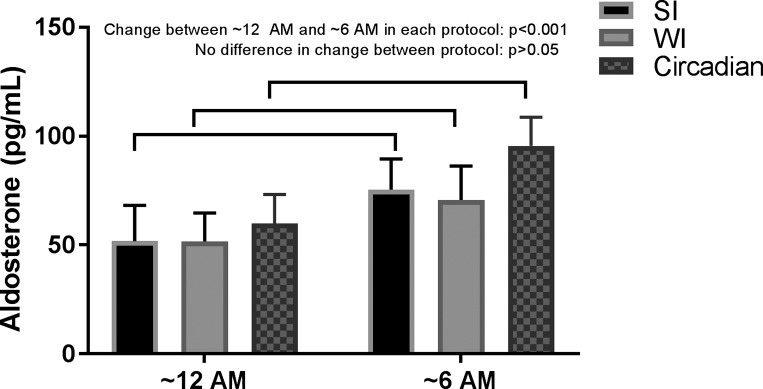Fig. 5.
Similar changes in aldosterone across the circadian night in forced desynchrony (Circadian), sleep inactivity (SI), and wake inactivity (WI) protocols. Aldosterone significantly increased across the circadian night in all three protocols when measured in the same standardized state [relaxed wakefulness while supine; n = 16 for protocol 1 (Circadian) and n = 9 for protocol 2 (SI/WI); P < 0.001 using 1-sample t-test for each protocol]. The increase between these protocols was not significantly different (P > 0.05 using independent-sample t-tests); thus, the increase across the circadian night is likely caused by the circadian system rather than sleep or the inactivity that accompanies sleep.

